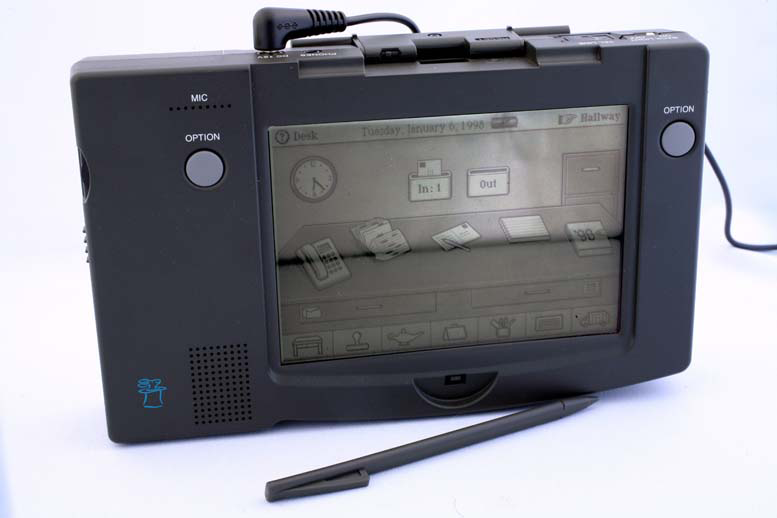Bill Buxton's Notes
Magic Cap was a pretty interesting operating system that was used on a family of PDA devices, beginning with the Sony Magic Link IC-1000, launched in 1994. It came out of a company called General Magic, started by Bill Atkinson, Andy Herzfeld, and Marc Porat, and spun out of Apple. (Atkinson and Herzfeld had both been key members of the team that developed the software for the original Macintosh.)
The unit that I have, the Data Rover 840, was released in 1988 and ran the 3.0 version of the software, which was much faster and refined than the original. This version had good reviews,1 however this didn't prevent the Magic Cap devices from failing in the market place . That does not make them uninteresting, however.
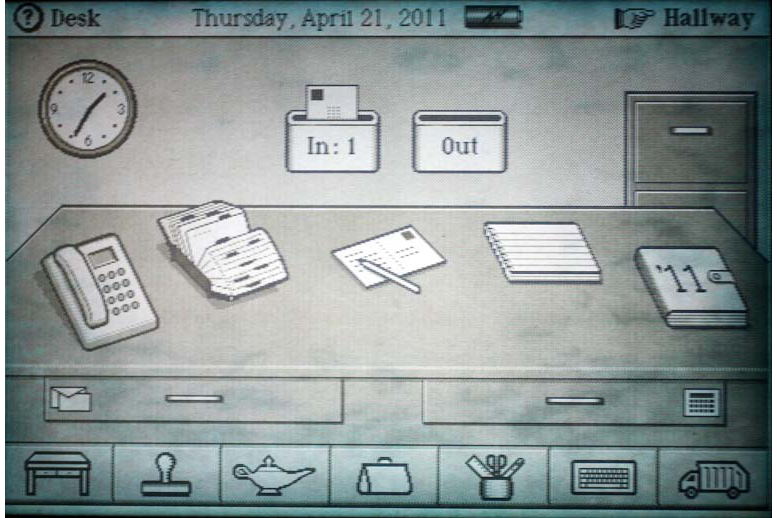 One interacted with the Magic Cap user interface via a touch screen that was sensitive to either your finger or a stylus. Unlike almost all commercial graphical user interfaces, which use 2D graphics, what one saw on the Magic Cap screen was rendered as 3D line-art, and, the metaphor used was one or rooms, rather than a desktop.
One interacted with the Magic Cap user interface via a touch screen that was sensitive to either your finger or a stylus. Unlike almost all commercial graphical user interfaces, which use 2D graphics, what one saw on the Magic Cap screen was rendered as 3D line-art, and, the metaphor used was one or rooms, rather than a desktop.
In one of those rooms, your office, you did find your desk. It was drawn in perspective. On it sat a drawing of your address book, Rolodex, phone, drawers, etc. You clicked on each to get the associated capability. Hence, for example, clicking on the Rolodex gave you your address cards, which were – of course – graphically rendered to represent Rolodex cards.
From your office, you could go into the hallway (by clicking on the menu item in the top right corner of the screen), within which you saw the doors to the rooms that were available to enter. These included the Library (where you found reference books, such as dictionaries, etc.), the games room, and a storage room.
The notion of a 3D graphical user interface is one that is proposed to me from time to time. Generally, those who propose it are unaware of Magic Cap, or earlier examples of the rooms metaphor, such as Henderson & Card (1986)3 or the 1984 Learning Company game, Robot Odyssey4.
Apart from it just being a really interesting and important device in the history of PDAs and pen-computing, this is a special device because it is the first gadget that I bought on e-bay. This prompted a great insight: that without writing a line of code, I could "construct" a working interactive prototype of a concept, simply by buying a device from the site (in this case, a brand new vintage Data Rover on e-bay for $27). This is partially why I view e-bay as one of the most important and inexpensive sketching and prototyping technologies available to the designer.
A key lesson is to recognize that we can create renderings of concepts by either synthesis or sampling. Drawing, writing code, or building physical models are examples of synthesis. Finding and collecting existing embodiments of the concept from the physical world is sampling. Creativity and imagination, coupled with a knowledge of history and what to look for, are key tools in effectively applying either approach.
A good collection of documents on Magic Cap can be found at http://joshcarter.com/magic_cap/magic_cap_developer_docs
 | Your office, with its desk, phone, filing cabinet, clock, Rolodex, drawers, note pad, etc. All are active and can be selected. Or, you can go into the hallway to get to a different room. |
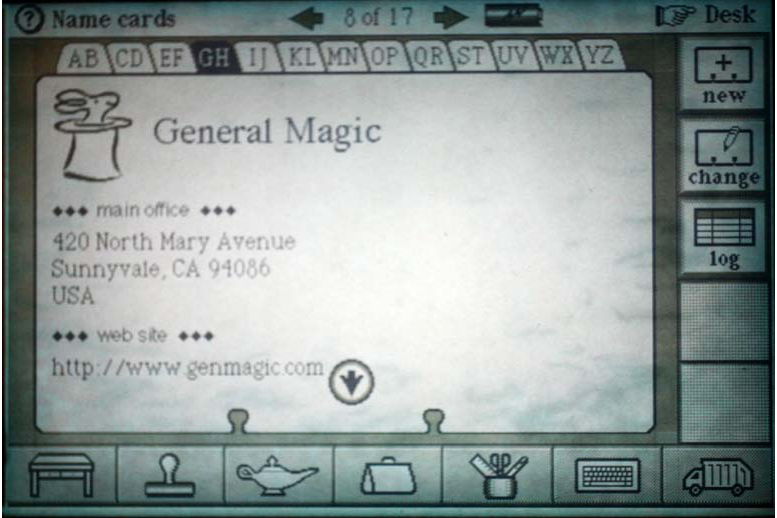 | Having selected the Rolodex that was on the desk, you can flip through the address cards to find the address that you are looking for. You can get back to the desktop by clicking on the desk icon at the extreme left in the icon-bar at the bottom of the screen. |
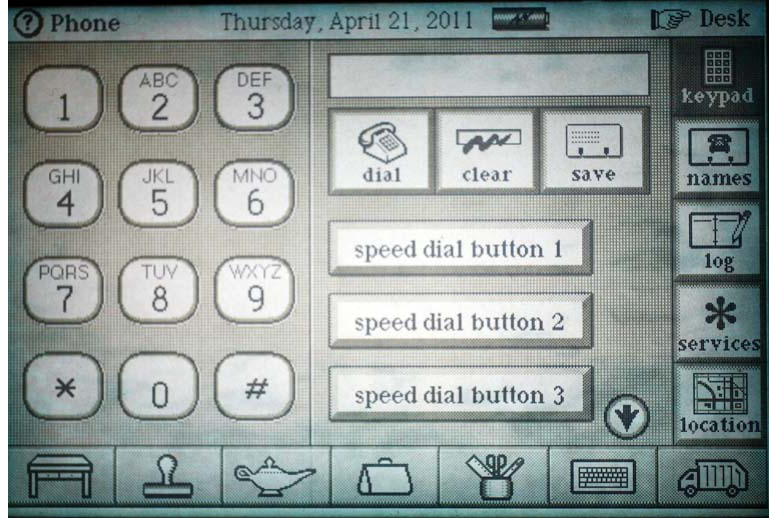 | Here, the phone on the desk has been selected, thereby revealing the various controls and options. Unlike the IBM/Bell South Simon, which was announced in 1993, and released the same year as the first Magic Cap device (1994), the Simon was a mobile phone whereas the Data Rover needed to be plugged into a phone jack and communicated by the terrestrial phone system. |
 | Here, one has clicked on the filing cabinet in the office. Drawers as well as folders in the drawers could be labeled and appropriate material stored within. One of the key ideas was to exploit spatial memory. |
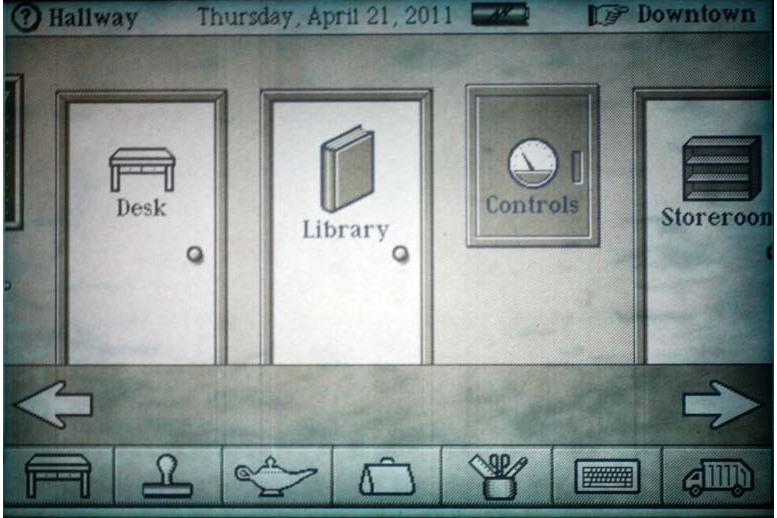 | By clicking on the "Hallway" button at the top right of the office screen, one gains access to the other rooms, including the Library, and Storeroom, shown here – along with the Office (Desk). General controls are accessed by opening the Controls panel, which is mounted on the Hallway wall. |
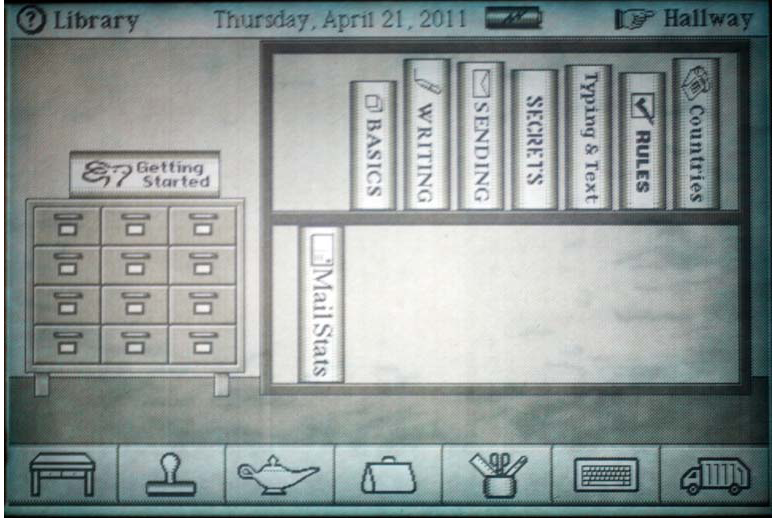 | Clicking on the Library door takes you inside, and gives you access to various reference material. You can add additional material, and things are accessible through the Card Catalogue or right off of the shelf (which is there to make often-used material more immediately accessible). |
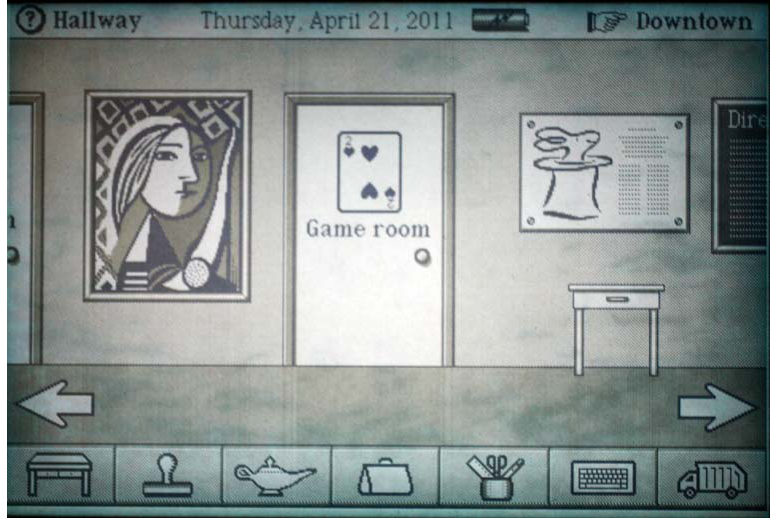 | Going back out into the hallway and continuing a bit further along, one can access the Games Room, as well as other functions. |
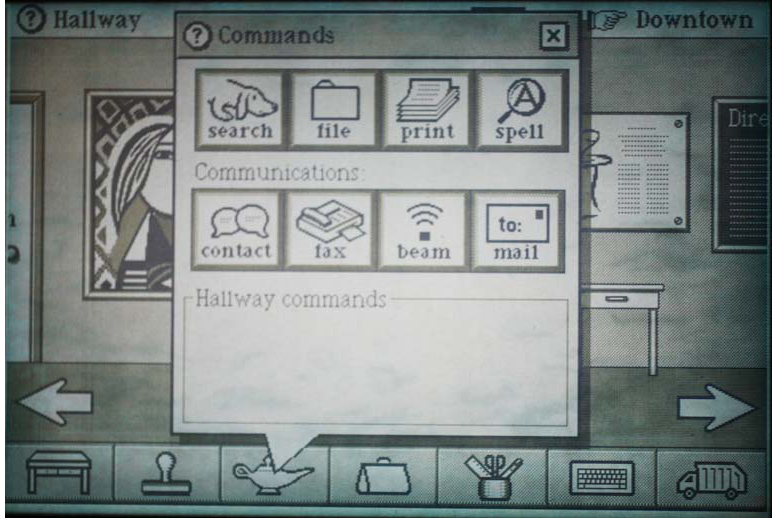 | At any time, access to key functions - such as tools, services, the office Desk, keyboard and trash- are immediately accessible via the task-bar at the bottom of the screen. Here the "Gene bottle" has been selected, giving one access to a number of services, such as search, printing, spell check, etc. Not the comic book type convention to give feedback as to which icon one has selected. |
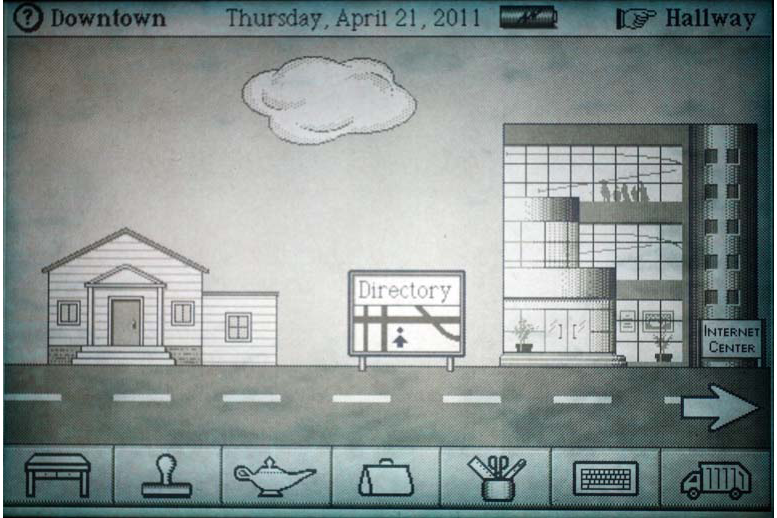 | Once in the Hallway, one also has the option to exit the building and go Downtown – by clicking the option in the top right corner of the screen. Here one can go back into one’s home office, represented as the house in the left of the screen, or proceed to the office building, where one can access commercial services. |
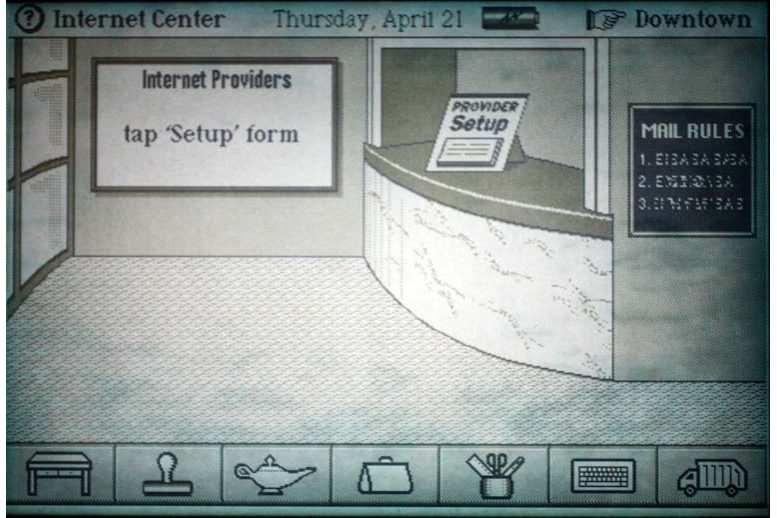 | Here one has entered into the Internet Center of the office building, and this is where one manages one’s account. |
Bill Buxton
April 2011
1http://www.pencomputing.com/magic_cap/data_rover_840.html
2It is not my purpose here to write a history of the company or product. Yet, it is well worth reading about, including as an interesting case study in start-ups, business, and innovation. One good place to start is the following article from Wired: http://www.wired.com/wired/archive/2.04/general.magic_pr.html
3Henderson, D.A. & Card, S. (1986). Rooms: the use of multiple virtual workspaces to reduce space contention in a window-based graphical user interface. ACM Transactions on Graphics (TOG), 5(3), 211-243.
4http://en.wikipedia.org/wiki/Droidquest
